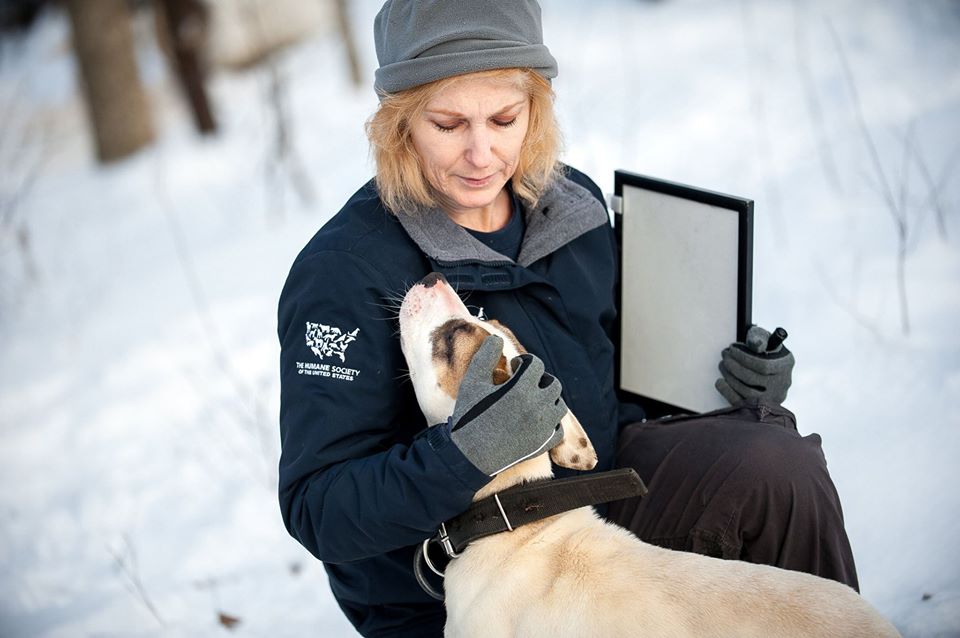
Jill Fritz joined the Humane Society of the United States (HSUS) in 2006 as the Minnesota and Wisconsin state director, then became the Michigan senior state director. In Michigan, Jill helped to pass laws phasing out the confinement of farm animals in cages and crates, and making the state’s animal fighting penalties the strongest in the nation. In 2014 she led the Keep Michigan Wolves Protected ballot campaign, in which the state’s voters overturned two laws authorizing wolf trophy hunting and trapping. Jill is now a Director of Wildlife Protection at the HSUS main office in Gaithersburg, Maryland, focused on ending wildlife killing contests and other cruel and unsporting practices across the U.S.
“We’ve seen tremendous progress … at the state level. All states now have animal cruelty laws on the books … Many … have also passed laws to end cruel practices like the use of … traps and snares, wildlife killing contests, and the trophy hunting of vital native carnivores …. “
- Were you involved in animal law/policy/advocacy in 1995?
Yes, by 1995 I had been involved in animal advocacy for several years, having read seminal books in the late 1980s like Animal Liberation by Peter Singer, Diet for a New America by John Robbins, Animal Factories by Jim Mason and Peter Singer, and Slaughter of the Innocent by Hans Ruesch.
2. If so, what were you doing?
I was living and working in San Diego, California, and volunteering with the many wonderful animal advocacy and animal rescue groups in the region.
3. What were the major issues in 1995?
In San Diego at that time, some of the major animal advocacy issues included captive and performing marine mammal acts at SeaWorld, captive elephants in zoos and performing acts, and the use of primates in research at major San Diego institutions. I was also learning a lot from my mentor and friend Jane Cartmill, the co-founder of San Diego Animal Advocates (the group of which I would later become president) about humane coexistence with coyotes and other wildlife in Southern California. And during the 1990s many of us worked on successful California ballot initiatives to prohibit the trophy hunting of mountain lions, to end the use of cruel body-gripping traps, and to prohibit the slaughter of horses and the sale of horsemeat for human consumption in the state.
4. What are the positive developments in last 25 years in animal law, policy or welfare?
We’ve seen tremendous progress with animal protection at the state level. All states now have animal cruelty laws on the books, and dogfighting is a felony-level crime in all 50 states. Many states have also passed laws, either through the regulatory process, in legislatures, or with citizen-led ballot measures, to end cruel practices like the use of body-gripping traps and snares, wildlife killing contests, and the trophy hunting of vital native carnivores like wolves, bears, mountain lions, and bobcats.
5. What are the negatives?
We’ve seen some alarming blowback from our opponents in response to those advances I mentioned above. As we saw graphically illustrated during our Keep Michigan Wolves Protected ballot campaign in 2013 and 2014, because our opponents are unable to make the case for their side with science, data, or facts, they instead use their influence in the legislature to ram through laws that prevent citizens from having a say in how their wildlife is managed. Or they’ll use tactics like discharging bills from committees without hearings or sneaking them through hearings without giving public notice, all to avoid the inevitable outrage of the public who wants to be there to defend their wildlife. In other states, industry-led efforts are underway to prevent citizens from using the ballot to protect wildlife or farm animals, and in some cases, even prevent wildlife commissions from modernizing wildlife management practices and eliminate cruel and unsporting practices like wildlife killing contests.
6. What did we learn in the last 25 years?
I think the animal protection movement has learned the importance of engaging at the policy level, whether it’s with local government, state wildlife commissions, or state legislatures. And you have to be willing to show up. It’s essential, because you can sure bet our opponents are showing up—in droves, every time—to wildlife commission meetings and legislative hearings. If we’re not there, too, their voices will continue to be the only ones heard.
“I believe there’s a good chance we’ll see an end to trapping for fur and an end to wild animal circuses and performing acts [by 2030].”
7. Looking toward the future, what are your predictions for:
- 10 years (2030)
I believe there’s a good chance we’ll see an end to trapping for fur and an end to wild animal circuses and performing acts.
- 25 years (2045)
Within 25 years we may see an end in many states to the trophy hunting of America’s large carnivores like wolves, bears, mountain lions, and bobcats, and an end to cruel and unsporting wildlife killing contests that target coyotes, foxes, bobcats, prairie dogs, crows, and other species.
